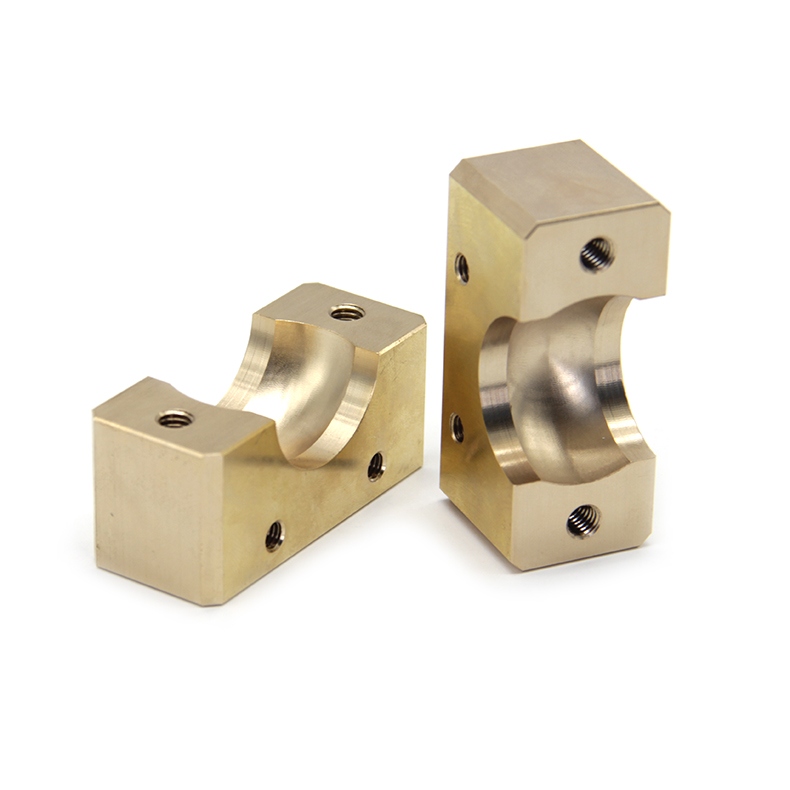Machining Metal Parts is to process metal raw Materials into parts with specific shapes, sizes and precision requirements through mechanical processing. Processing processes include cutting, milling, turning, drilling, grinding and EDM. Machining Metal Parts can be made into shafts, discs, grooves and other parts.

Processing Technology
Turning: Use lathes to process cylindrical parts, remove excess materials by cutting, suitable for making shaft and disc parts.
Milling: Use milling machines to process complex planes, curved surfaces and grooves, suitable for metal parts of various shapes.
Drilling: Use drilling machines to process holes on parts, including threaded holes and locating holes.
Grinding: Use grinders to improve surface accuracy and finish, usually used for high-precision parts.
Electrodischarge machining (EDM): Non-contact machining through electric sparks, suitable for difficult-to-process materials such as cemented carbide, and suitable for the processing of high-precision molds and complex-shaped parts.
Precision requirements
The precision of metal processing parts depends on the application requirements and is usually divided into the following categories:
General precision: The tolerance is about 0.1mm, suitable for structural parts.
High precision: The tolerance is 0.01-0.05mm, used for high-demand mechanical parts.
Ultra-high precision: The tolerance is 0.001-0.005mm, suitable for aerospace, Medical equipment and other fields.
Commonly used materials:
Aluminum Alloys: light weight, easy processing, corrosion resistance, widely used in aviation, automobiles, electronic housings, etc. Common models include 6061, 7075, etc.
Stainless Steel: high strength, good corrosion resistance, suitable for medical equipment, food processing equipment and automotive parts. Common models include 304, 316, etc.
Carbon Steel: high hardness, low cost, but weak corrosion resistance, mostly used in mechanical equipment and structural parts, such as bolts, gears, etc.
Copper and Copper Alloys: good Electrical and thermal conductivity, commonly used in Electrical connectors, radiators, etc. Copper alloys such as brass and bronze have good wear resistance and corrosion resistance.
Titanium Alloys: high strength, corrosion resistance, high temperature resistance and light weight, commonly used in aerospace, medical implants and high-end sports equipment.
Magnesium Alloys: Very light weight, suitable for manufacturing lightweight products, but relatively poor processing and oxidation stability. Commonly used in automotive parts, electronic equipment housings, etc.
Tool Steel: Extremely hard, suitable for manufacturing knives, molds and other highly wear-resistant parts, such as molds, stamping tools, etc.
Zinc Alloys: Easy to cast and process, with good corrosion resistance, widely used in small structural parts and electronic product housings.
The choice of different materials is mainly based on the purpose of the parts, environmental requirements and mechanical performance requirements. For example, parts with high requirements for lightness and heat dissipation usually use aluminum or magnesium alloys, while parts with wear resistance and high strength requirements are mostly made of stainless steel or tool steel.
Machining Metal Parts are widely used in mechanical manufacturing, including transmission parts (such as gears, shafts), fasteners, brackets, hydraulic and pneumatic parts, guide rails and sliders, molds, pumps and motor parts, etc. These precision-machined metal parts can provide high strength, wear resistance and precision, and meet the strict requirements of mechanical equipment in transmission, support, sealing and fluid control. Therefore, they are widely used in engineering machinery, industrial automation and various production equipment to ensure the efficiency and stability of the equipment.
Machining Metal Parts are widely used in the automotive industry, including engine parts (such as cylinder blocks, crankshafts), transmission parts (such as gears, drive shafts), suspension and steering systems, brake systems, and body structures. These precision-machined metal parts ensure the performance and safety of the vehicle, and are also used in key components such as motor housings and battery housings in electric vehicles to achieve lightweight and efficient heat dissipation, further improving the endurance and durability of electric vehicles.
Machining Metal Parts are widely used in medical devices, including surgical instruments, implants, dental equipment, imaging equipment components, infusion pumps and other key parts. These precision-machined metal parts provide high precision, good corrosion resistance and biocompatibility, ensuring the reliability, safety and hygiene standards of the equipment. They are widely used in surgery, treatment and diagnosis, providing a guarantee for patients' medical experience.
FAQ
Why do machined metal parts have scratches or are not smooth on the surface?
Surface scratches or are not smooth may be caused by tool wear, inappropriate machining speed, or loose material clamping. To avoid this, it is recommended to use high-quality, sharp tools, adjust appropriate machining parameters, and ensure that the parts are firmly fixed.
Why do machined parts sometimes have deviations in size?
Dimensional deviations are usually caused by inaccurate equipment calibration, tool wear, or thermal expansion of the material. Regularly calibrating the equipment, checking tool wear, and considering the thermal expansion of the material during machining can effectively reduce deviations.
When machining metal parts, how to prevent material overheating and deformation?
Overheating of the material can cause deformation, affecting the size and surface quality of the part. Using coolant or lubricant, reducing cutting speed, and using segmented machining can effectively control heat accumulation and reduce the risk of deformation.
The surface of machined metal parts is prone to oxidation or corrosion. How to deal with it?
After the parts are machined, appropriate surface treatment (such as anodizing, electroplating, or spraying) should be performed to increase oxidation resistance and corrosion resistance. At the same time, they should be kept dry during storage to avoid the influence of humid environments on the parts.





 English
English

